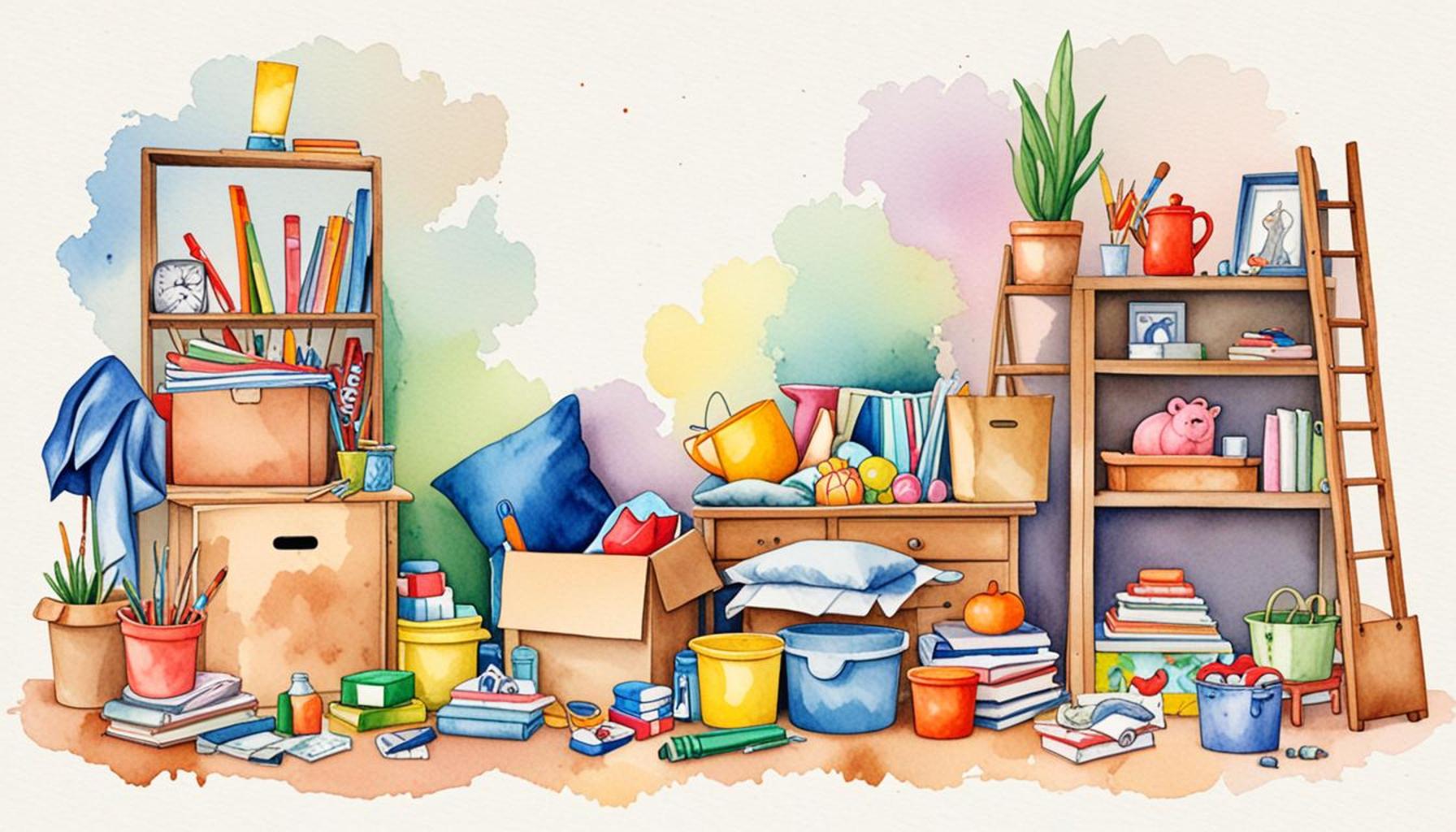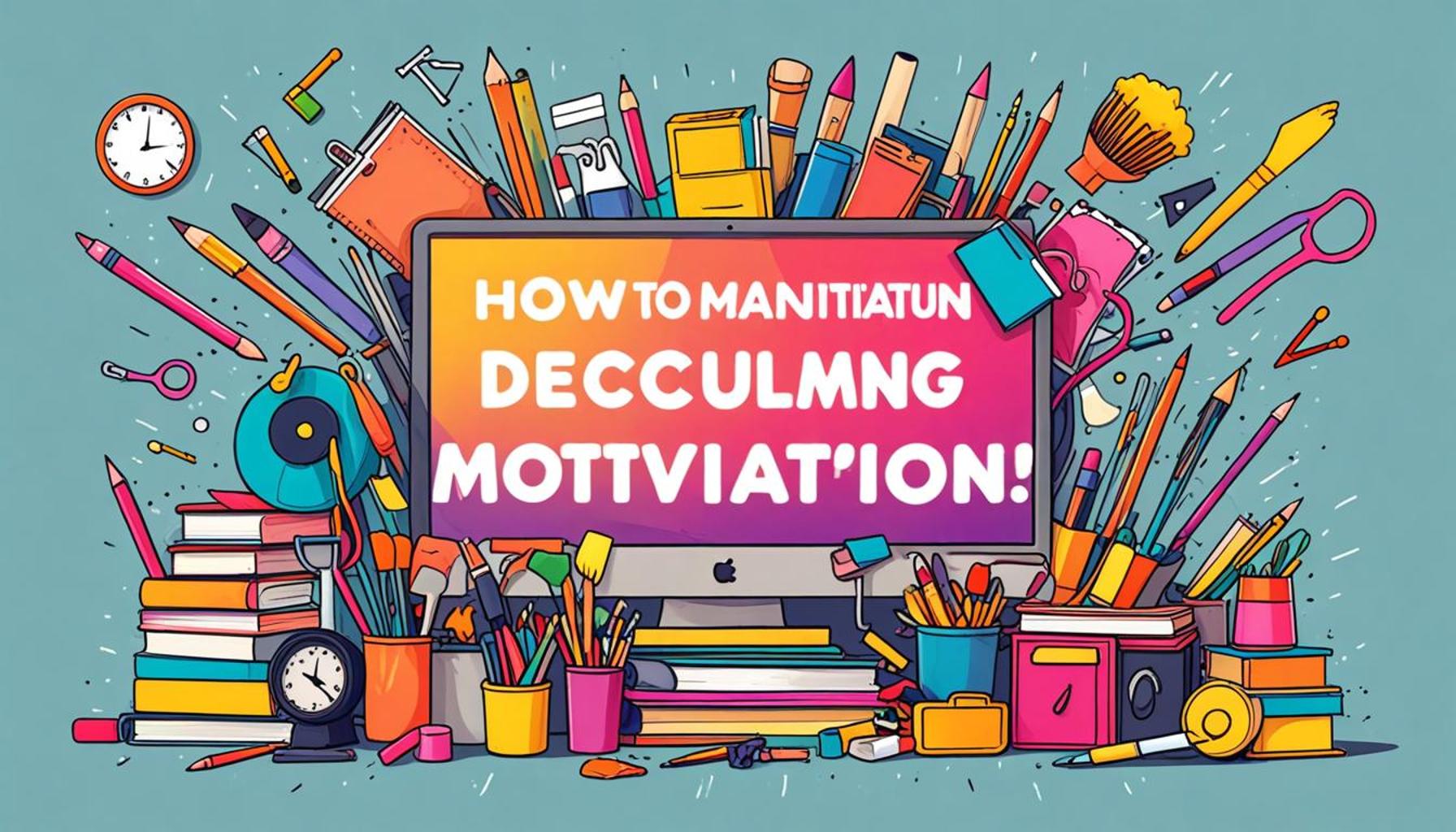Decluttering Strategies for Families: Keeping Order in Chaos

Introduction
In today’s fast-paced world, families often find themselves surrounded by countless items that contribute to a sense of chaos. The clutter can be overwhelming, but effective decluttering strategies can transform your home into a sanctuary of order. Discover how simple techniques can create a harmonious living space for everyone.
Assess the Chaos
Begin with a thorough evaluation of each room. Take a moment to identify areas that feel cramped or chaotic and investigate why they have become cluttered. Is it due to a lack of storage solutions, or is it the result of emotional attachments to certain items? For example, toys that your children have outgrown may still occupy precious space. By assessing the chaos, you lay the groundwork for a more organized home.
Involve the Family
Encouraging family members to participate in the decluttering process is crucial. Not only does this promote teamwork, but it also teaches children the importance of organization and responsibility. Create a decluttering day once a month, where everyone focuses on a specific area of the house. For instance, you might assign each family member a room or category, such as books or clothing, allowing everyone to take ownership of their space. When family members feel included, they are more likely to embrace the changes and contribute positively.
Purge Regularly
Scheduling routine times to assess and remove unnecessary items can maintain a clutter-free environment. Just as you might set a reminder for a dentist appointment, consider establishing monthly “declutter days” on your calendar. This proactive approach prevents the buildup of clutter and keeps your living spaces organized. For example, after every season, take stock of clothing and donate items that have not been worn in the past year. This practice not only declutters but also allows for a more sustainable lifestyle.
Benefits of Decluttering
Understanding the benefits of decluttering goes beyond aesthetics. A tidy home can lead to improved mental well-being, increased productivity, and heightened family cohesion. Research supports this notion, with a variety of striking statistics:

- According to a study by UCLA, families with clutter raise children who struggle with focus, as overwhelming environments can lead to distractions and stress.
- Research from the National Association of Professional Organizers indicates that 80% of the clutter in homes is a result of disorganization, not lack of space. This highlights the need for effective organization techniques.
- Clearing clutter can save up to 25% of time spent looking for items, allowing families to focus on more meaningful activities together rather than searching through disorganized areas.
Conclusion
With the right strategies, you can turn chaos into tranquility. This article will explore various methods tailored for families seeking to reclaim their space. From the mindset shift required to embrace decluttering to actionable tips on organizing, prepare to embark on a journey to a more organized home. Embrace the process, and enjoy the clearer spaces and a more tranquil mindset that comes from living in harmony with your environment!
DON’T MISS: Click here to unlock smart space-saving tips!
Creating a Decluttering Mindset
Before diving into physical decluttering, it’s essential to cultivate a decluttering mindset within your family. This philosophical shift is about recognizing and understanding the emotional attachments we have to our belongings. Families often accumulate items over time, usually driven by sentiment rather than practicality. Encouraging open conversations about the importance of having a clutter-free environment helps set the stage for successful decluttering.
Start by sharing the benefits of decluttering, such as reducing stress, improving focus, and creating a welcoming atmosphere. When everyone understands the rationale behind the process, they are more likely to participate enthusiastically. It may also be helpful to conduct a family meeting where each member can express their feelings about clutter and suggest ideas for organization. This collaborative approach not only strengthens family bonds but also fosters a collective responsibility towards maintaining an orderly home.
Establish Decluttering Zones
Designating “decluttering zones” throughout your home can streamline the organization process. These are specific areas where family members can sort through items that need to be assessed for removal or organization. For example, the living room could have a dedicated box for items that the family has agreed to donate. Kitchen counters can be cleared regularly to ensure they remain functional and tidy. By establishing these zones, you create defined spaces to manage clutter, making it easier to maintain order.
Utilize the Four-Box Method
The Four-Box Method is a practical and effective strategy for families to enhance their decluttering efforts. Label four boxes as follows:
- Keep: Items that are essential or loved and will be kept.
- Donate: Good-condition items that your family no longer uses.
- Trash: Broken or damaged items that can’t be repaired.
- Store: Seasonal items or belongings that may be needed in the future.
Have each family member participate in going through their belongings using this method. The visual of four tangible categories helps clarify decision-making and decreases the chances of retaining unnecessary items. It turns decluttering into a straightforward and manageable task rather than an overwhelming chore.
Set Limits and Guidelines
Establishing clear limits and guidelines is essential in the decluttering process. For instance, you might implement a “one in, one out” rule for new purchases—meaning that if a new toy comes in, an old one must go out. This rule promotes mindfulness around consumption and helps prevent future clutter from accumulating. Setting rules not only provides structure, but it encourages a sense of ownership and responsibility among family members regarding their possessions.
As families navigate the decluttering journey, integrating these strategies can significantly contribute to a harmonious and organized living space. Letting go of the psychological burden of clutter fosters a healthier and happier home environment, helping everyone to reclaim their space and peace of mind. Stay tuned as we explore further methods to declutter and organize your home successfully!
| Category | Benefits |
|---|---|
| Time Management | Incorporates routines that create efficiency in daily tasks, reducing stress for families. |
| Emotional Well-Being | Fosters a sense of peace and control, helping to eliminate anxiety often caused by physical clutter. |
| Community and Family Bonding | Encourages teamwork in decluttering, providing an opportunity for families to connect. |
| Financial Savings | Reduces spending on unnecessary items, helping to save on household expenses. |
Incorporating decluttering strategies into family routines not only helps maintain an organized home but also significantly enhances overall family dynamics. By establishing a system where everyone contributes, families can effectively defeat disorder, fostering a collaborative environment where organization is prioritized. These strategies, tailored to meet the unique needs of each family member, can serve as guideposts in the endeavor to conquer chaos.Furthermore, engaging children in decluttering activities not only instills valuable lessons about ownership and responsibility but also encourages them to develop their own organizational skills. This proactive approach not only makes the clutter seem less daunting but also empowers children to embrace orderliness, creating a harmonious living space for everyone involved. When families take the step to declutter, they are often taken aback by the newfound space and ease it brings, sparking interest in sustainable practices that could lead to long-term benefits. Explore further ways to implement these strategies effectively and discover how they can transform your chaotic household into a haven of peace and organization.
DISCOVER MORE: Click here to enhance your home organization
Incorporate a Family Decluttering Calendar
To maintain a clutter-free environment effectively, consider creating a family decluttering calendar. This proactive approach establishes regular intervals for decluttering tasks, which helps to ingrained routine into family life. Determine a schedule that works for everyone—be it weekly, monthly, or seasonally—and assign specific decluttering activities for each session. For instance, the first Saturday of every month could be designated for toy sorting, while an afternoon during a holiday break might focus on clothes and seasonal decorations.
Integrating decluttering into family calendars not only provides accountability but also encourages commitment. It transforms decluttering from a daunting task into a fun family activity. To enhance engagement, families can even turn these moments into events, with music, snacks, and a rewards system for those who actively participate. This not only makes the work enjoyable but can instill valuable lessons in responsibility, teamwork, and the joys of shared chore completion.
Embrace Digital Decluttering
In today’s digital age, digital decluttering is equally as important as physical decluttering. The accumulation of digital clutter can affect productivity and mental well-being just as much as an overcrowded living space. Establish a family rule to regularly organize and declutter devices, including smartphones, tablets, and computers. Encourage family members to sort through emails, delete old documents, and unsubscribe from unnecessary digital subscriptions in regular intervals.
Consider setting aside a family tech night, where everyone can participate in these digital clearing activities together. This collaborative effort not only fosters tech-savviness among family members but also creates a shared understanding of the importance of managing digital space thoughtfully.
Teach Minimalism Through Example
One of the most powerful ways to instill an interest in decluttering and organizing is through the practice of minimalism. By adopting a minimalist lifestyle, families can model principles of simplicity and intentionality to their children. Start by leading projects that emphasize quality over quantity, encouraging family members to focus on what truly adds value to their lives.
For example, rather than allowing family members to purchase numerous toys or clothes, discuss the merits of investing in a few high-quality, durable items that will provide lasting benefits. Engage in discussions about needs versus wants, which can help children develop strong decision-making skills regarding their own possessions.
Encourage Emotional Detachment
A significant barrier to effective decluttering is the emotional attachment many individuals have to their possessions. It’s crucial to teach children the difference between sentimentality and utility. Encourage family members to evaluate items based on their current utility rather than their sentimental value. Create opportunities for children to express and articulate their feelings about items they hold dear, while guiding them to let go of things that no longer serve a purpose.
For instance, if a child is reluctant to part with toys they once loved, frame it as a chance to pass joy onto another child. Sharing the idea that their “retired” toys can make another child happy fosters understanding and emotional intelligence, allowing them to view decluttering as a form of generosity rather than loss.
Implementing these strategies empowers families to create and maintain a clutter-free environment that nurtures an organized, peaceful, and functional home. As you work through these methods, consider which resonate most with your family and tailor them to fit your unique situation. The journey of decluttering, when approached together, can ultimately transform your living space and family dynamics positively.
DIVE DEEPER: Click here to learn more
Conclusion
In summary, decluttering strategies for families provide essential tools for creating an organized and harmonious home. By implementing a family decluttering calendar, embracing not just physical but also digital decluttering, and teaching principles of minimalism, families can transform the often overwhelming task of decluttering into a manageable, enjoyable, and collaborative effort. These proactive approaches foster a sense of responsibility and ownership among family members while instilling lifelong skills that promote both organization and mindfulness.
Moreover, encouraging emotional detachment from possessions illustrates the balance between sentimentality and utility, paving the way for a healthier relationship with belongings. As families take on this journey together, they not only streamline their environment but also reinforce values of teamwork, generosity, and conscious living. Everyone plays a role in shaping this collective experience, turning the chaos of daily life into a structured, functional space that nurtures well-being.
Ultimately, the quest for order in the midst of chaos is ongoing. By continually evaluating and fine-tuning their decluttering practices, families can ensure their homes remain havens of peace and organization. Consider exploring resources, books, or community workshops to deepen your understanding of decluttering philosophy and find inspiration as a family. The path to a clearer home and mind begins with small, consistent actions that cultivate lasting change.


